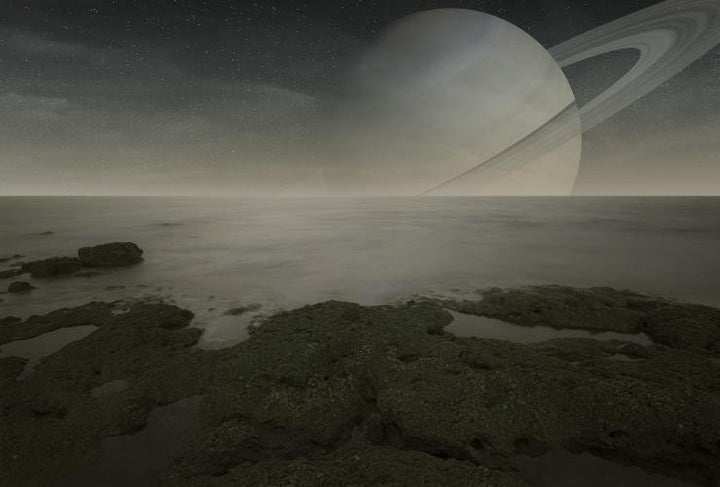‘Electric sands’ could be the answer to why Saturn’s largest moon, Titan, is capable of forming 300-feet high sand dunes that face against the direction of the prevailing winds.
Research published from the Georgia Institute of Technology suggests that the surface of Titan, which is visually the most similar object in the solar system to earth, is covered in tiny electrically charged particles.

When the wind blows - anything from fifteen miles per hour or faster - these non-silicate granules start to get moved about and hop in a motion known as saltation.
This collision process means they gain charge, just like a balloon rubbing on your hair, and they begin to stick together in a way that sand on our own planet does not.
This means that while on earth you would need water to clump sand to build a sandcastle, on Titan you would not.
Once the particles get this charge, they are able to maintain this charge for days or months at a time. In fact, Josef Dufek, the Georgia Tech professor who co-led the study, said: “If you grabbed piles of grains and built a sand castle on Titan, it would perhaps stay together for weeks due to their electrostatic properties.”
While this is good news for anyone planning a beach holiday on Titan, it isn’t such good news for potential astronauts, Dufek said: “Any spacecraft that lands in regions of granular material on Titan is going to have a tough time staying clean. Think of putting a cat in a box of packing peanuts.”
This finding, which required the team to build a small-scale replica of the planet with a 98% nitrogen atmosphere, also shed some light on the mystery of Titan’s dunes.
The paper’s lead author Josh Méndez Harper, said: “This makes the grains so sticky and cohesive that only heavy winds can move them. The prevailing winds aren’t strong enough to shape the dunes.
There have been several missions to Titan by NASA’s Cassini spacecraft, since 2005, revealing large liquid lakes at the poles, as well as mountains, rivers and potentially volcanoes.
